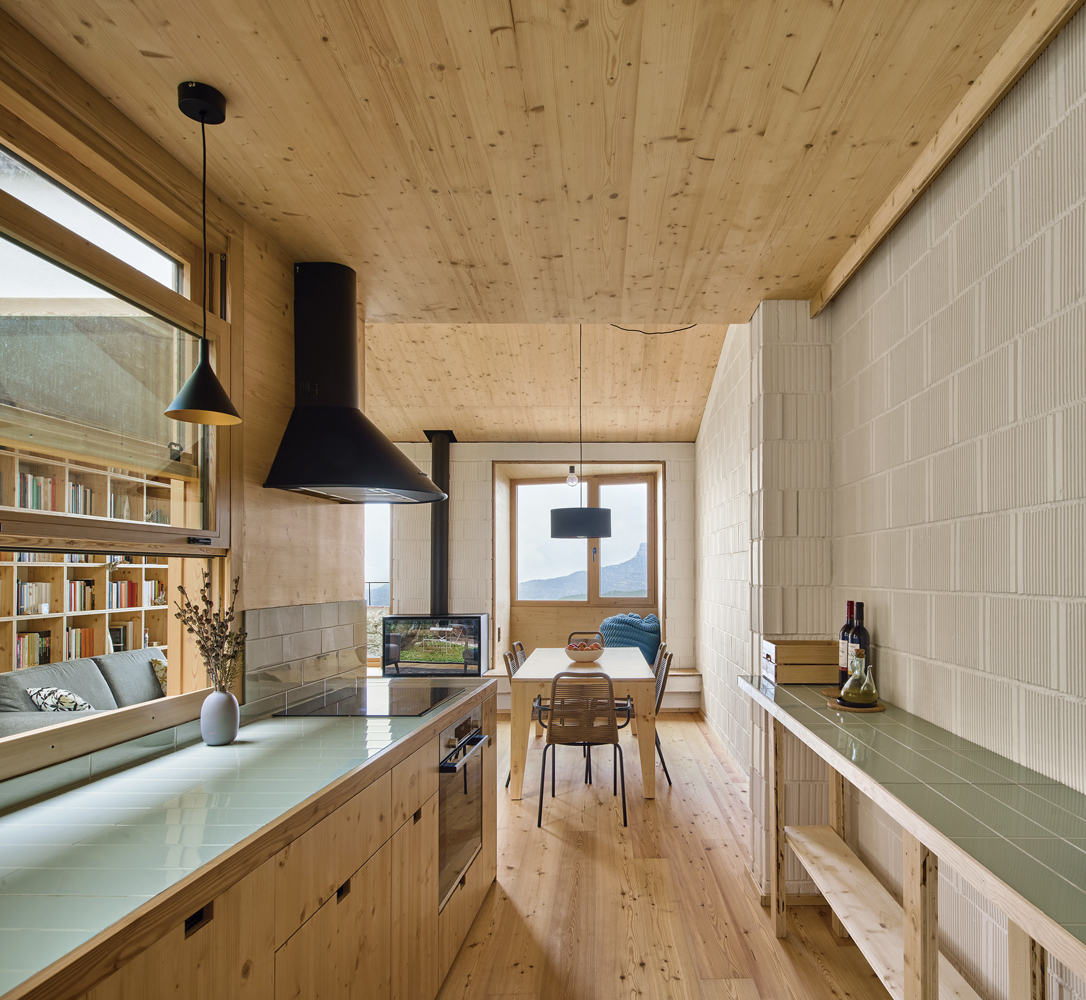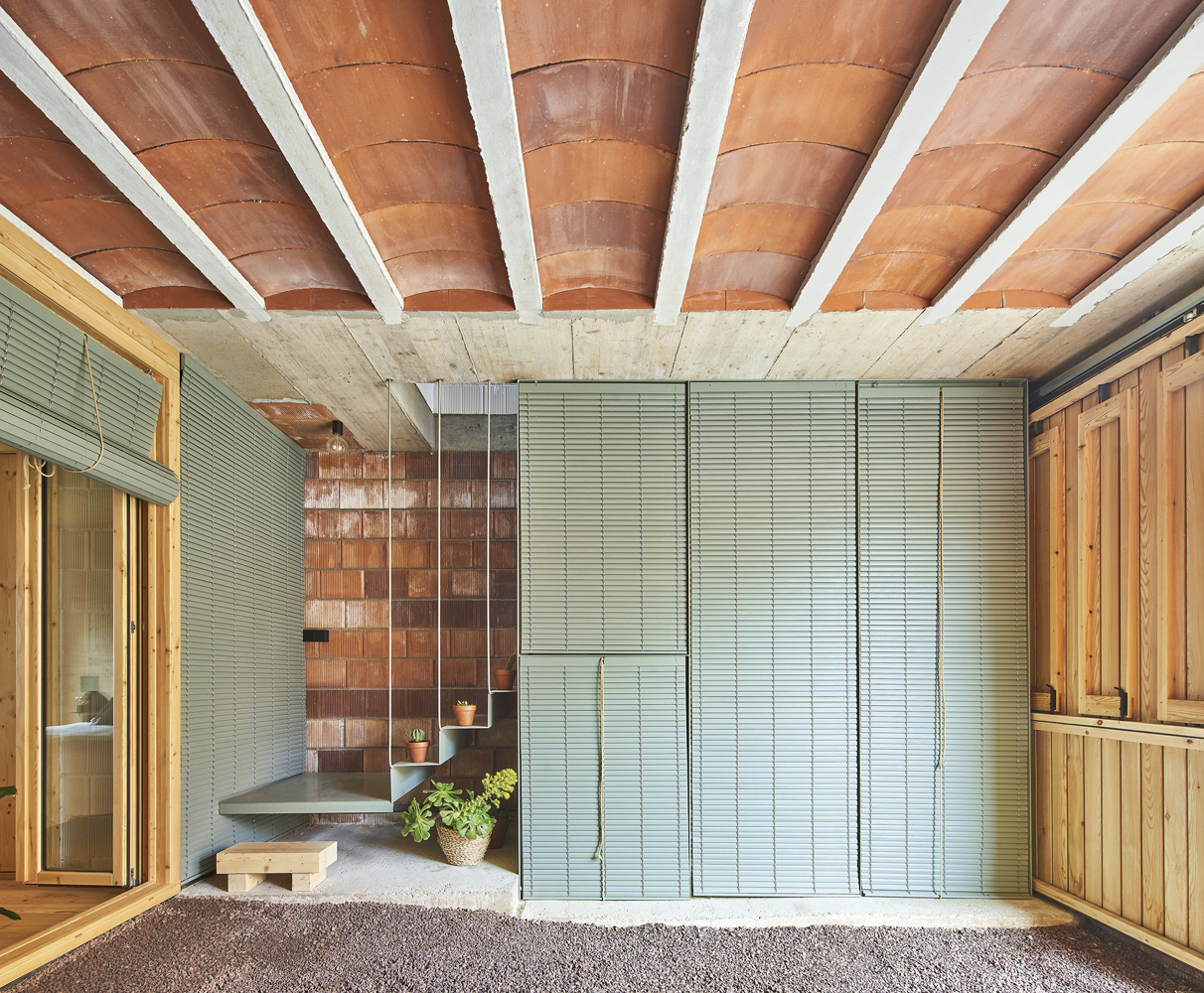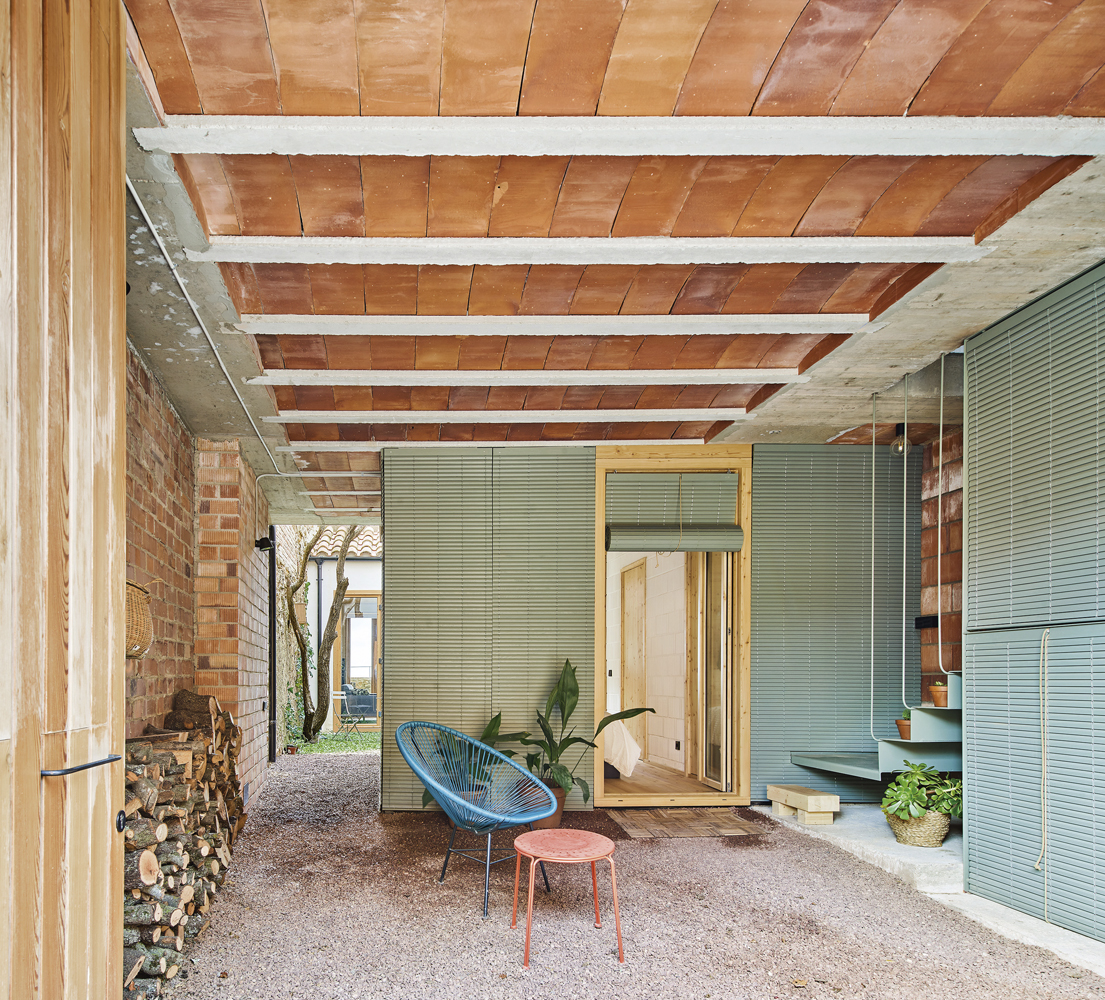A La Morera de Montsant, Tarragona, la progettista Núria Salvadó ha creato un rifugio personale per una coppia di fratelli alpinisti, suddividendo gli spazi di un lotto lungo e stretto con una vista mozzafiato sul Montsant. Due volumi ceramici con altezze diverse sono stati aggiunti alle estremità; il piano superiore dei due volumi, che ospita la zona notte, crea un grande portico simile agli ingressi delle case vernacolari, mentre il piano terra, che si trova sul retro del lotto, è più complesso e si configura in tre spazi esterni e tre interni: la cucina, l’unica stanza della casa e lo spazio di incontro condiviso; così Ca la Closa genera un micro mondo interno, con spazi abitativi articolati e connessioni che facilitano il rapporto con il cortile esterno, dove un vecchio mandorlo è stato trasformato nel perno centrale della casa. Il risultato sono due esperienze abitative sufficientemente indipendenti, ma allo stesso tempo sufficientemente collegate e con risorse condivise, che si adattano alla flessibilità e al budget richiesto.

In La Morera de Montsant, Tarragona, the designer Núria Salvadó has created a personal refuge for a pair of mountaineering brothers, dividing the spaces of a long and narrow lot with a breathtaking view of Montsant. Two ceramic volumes with different heights were added at the ends; the upstairs of the two volumes, which houses the sleeping area, creates a large portico similar to the entrances of vernacular houses, while the ground floor, which is located at the back of the lot, is more complex and is configured in three external and three internal spaces: the kitchen, the only room in the house and the shared meeting spaces; thus Ca la Closa generates an internal micro world, with articulated living spaces and connections that facilitate the relationship with the external courtyard, where an old almond tree has been transformed into the central pivot of the house. The result is two sufficiently independent living experiences, but at the same time sufficiently connected and with shared resources, which adapt to the flexibility and budget required.






source: Núria Salvadó








